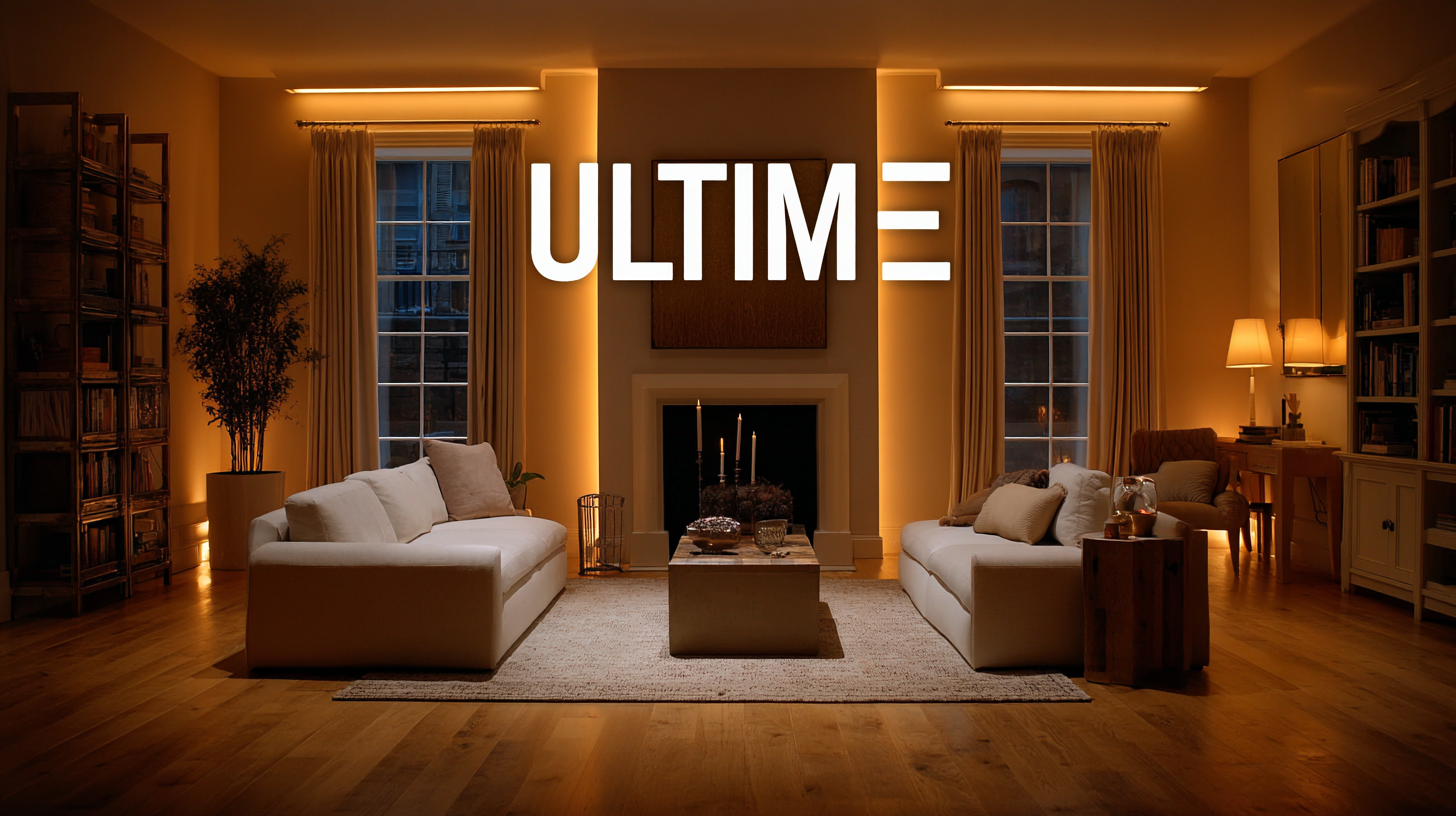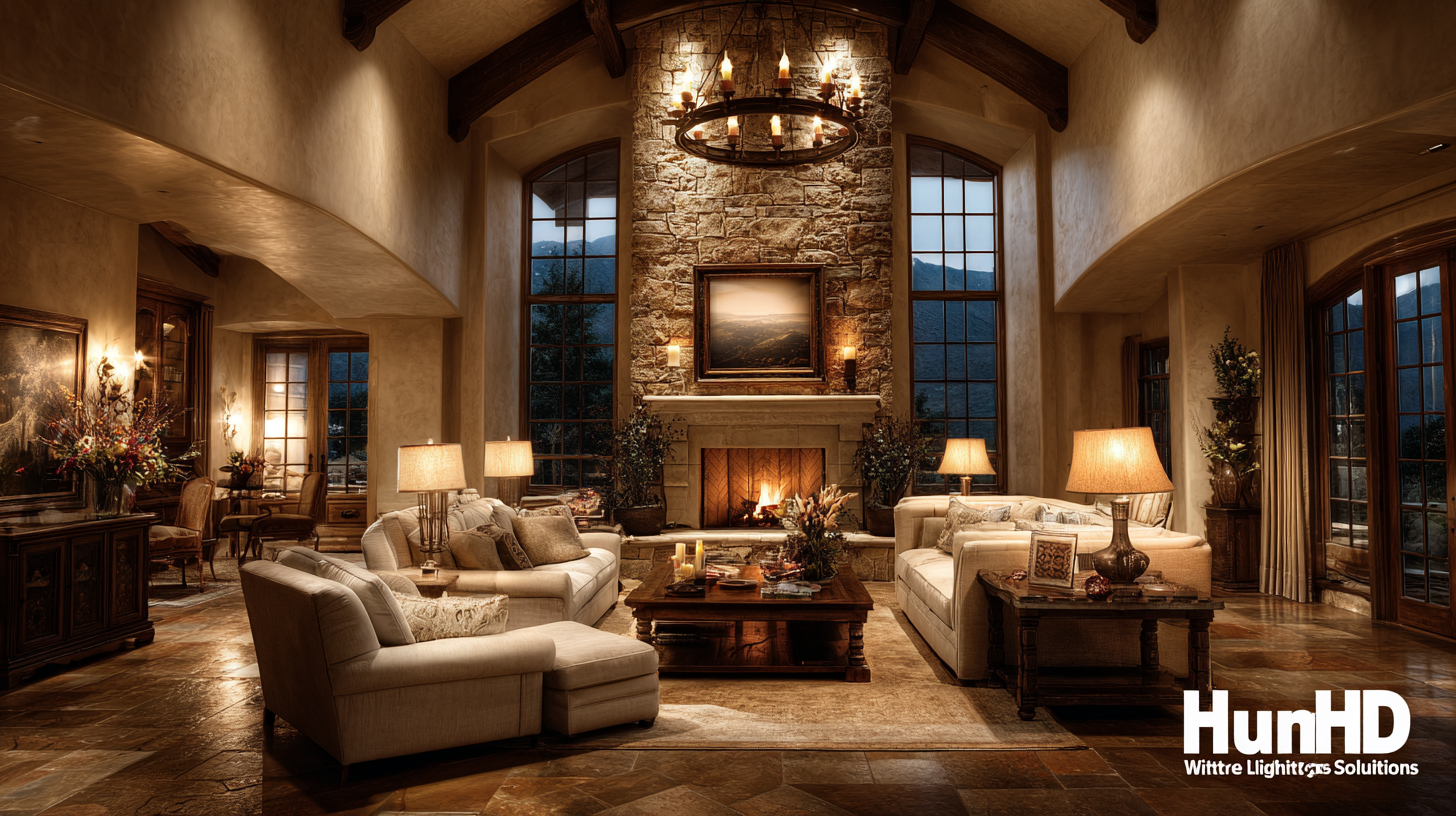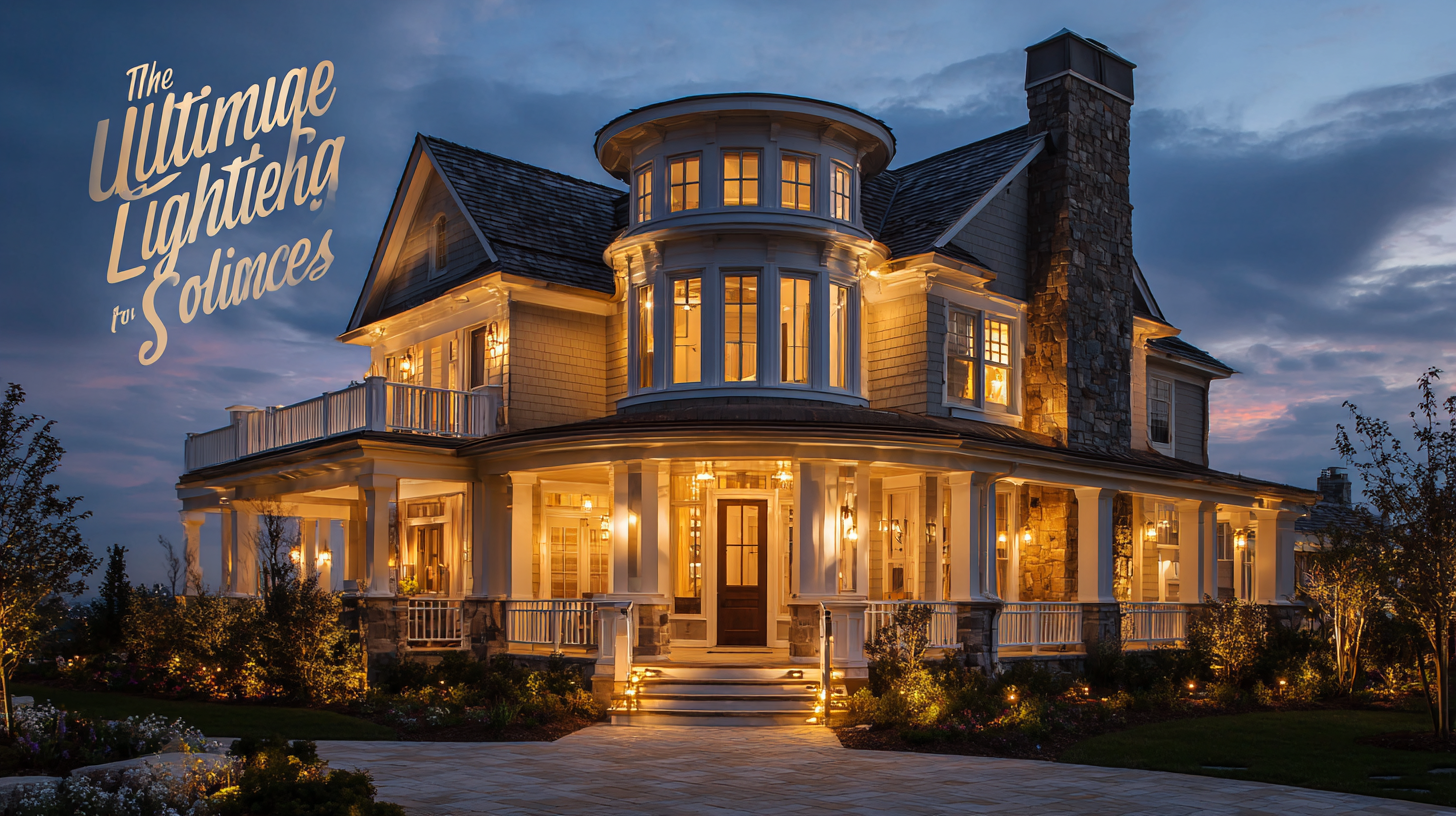Edison LED Lighting
Projects
What is the Ultimate Guide to Choosing the Best Home Lighting Solutions
In the realm of interior design, the significance of effective Home Lighting cannot be overstated, as it not only enhances aesthetics but also influences mood and functionality within a space. According to a recent report by the American Lighting Association, approximately 40% of homeowners indicate that proper lighting is a crucial factor in their overall satisfaction with their living environment. Furthermore, a well-illuminated home can significantly enhance energy efficiency; the U.S. Department of Energy estimates that LED lighting can reduce energy consumption by over 75% compared to traditional incandescent bulbs. As we explore the ultimate guide to choosing the best Home Lighting solutions, we will delve into detailed technical specifications, the latest trends, and essential tutorials that empower homeowners to create spaces that are both beautiful and efficient. Whether you are remodeling your home or simply looking to upgrade your lighting system, making informed choices is key to achieving the desired ambiance and functionality.

Understanding Different Types of Home Lighting: A Comprehensive Overview
Understanding the different types of home lighting is crucial for creating an inviting and functional living space. According to the American Lighting Association, effective lighting can increase the perceived value of a home by up to 20%. There are three primary types of lighting to consider:
- Ambient lighting provides overall illumination and sets the mood.
- Task lighting focuses on specific areas for activities like reading or cooking.
- Accent lighting highlights architectural features or artwork, adding depth and interest to a room.
When choosing lighting solutions, it's also essential to consider the latest technologies. The U.S. Department of Energy reports that LED lighting is expected to dominate the market, potentially reaching 70% of the residential lighting sector by 2025. Not only do LEDs offer energy efficiency—using up to 75% less energy than traditional incandescent bulbs—but they also come in various styles and color temperatures, allowing homeowners to customize their spaces effectively. By understanding these different types of home lighting and the advancements in technology, homeowners are better equipped to make informed decisions for their lighting needs.
Key Considerations for Assessing Your Home's Lighting Needs
When assessing your home's lighting needs, several key considerations come into play. First and foremost, understanding the function of each room is crucial. According to a report by the American Lighting Association, different spaces require different types of lighting. For instance, ambient lighting is essential in living areas, while task lighting is vital in kitchens and offices where activities like reading or cooking take precedence. This targeted approach ensures that each area is both functional and aesthetically pleasing.
Another critical factor is energy efficiency. The U.S. Department of Energy reports that lighting accounts for approximately 12% of a household's energy costs. By opting for LED lighting over traditional incandescent bulbs, homeowners can reduce energy consumption by up to 75%. Furthermore, integrating smart lighting solutions can provide even more control over energy usage, allowing homeowners to tailor illumination according to their needs and schedules. This not only underscores the practical side of lighting but also highlights the growing trend towards sustainability in home design.

Real-Life Applications: Case Studies of Effective Home Lighting Solutions
When it comes to home lighting solutions, understanding real-life applications can significantly enhance your decision-making process. One effective case study involves a family that transformed their dark living room into a vibrant, functional space using layered lighting. By combining recessed lights with strategically placed floor lamps and accent lighting for artwork, they created a welcoming atmosphere that is both cozy and stylish.
**Tips:** To achieve similar results, consider the purpose of each room. In areas meant for relaxation, opt for warm, softer lighting, while task-oriented spaces like the kitchen benefit from brighter, more focused lighting. Mixing different types of fixtures—such as pendant lights, chandeliers, and sconces—can provide depth and versatility to your design.
Another notable example is a home office that utilized desk lamps and adjustable wall sconces to combat glare and eye strain. This thoughtful arrangement not only improved productivity but also allowed for a personal touch with stylish lamp designs.
**Tips:** When designing your home office lighting, prioritize adjustable options to give you control over brightness levels. Incorporate natural light as much as possible, and position your desk to minimize shadows while maximizing the tranquility of daylight.
Home Lighting Solutions Effectiveness
How to Choose Energy-Efficient Light Fixtures for Your Home
When it comes to selecting energy-efficient light fixtures for your home, there are several factors to consider that can significantly impact both your energy bills and your environmental footprint. First and foremost, look for fixtures that use LED or CFL bulbs, as these options consume up to 80% less energy than traditional incandescent bulbs and have a longer lifespan. Not only will this save you money in the long run, but it also reduces the frequency of bulb replacements, minimizing waste.

Another important aspect is the fixture's design and placement. Choose fixtures that provide adequate illumination for each room's purpose while minimizing excess lighting. dimmer switches and smart lighting systems can further enhance energy efficiency by allowing you to adjust brightness levels according to your needs. Additionally, it's wise to consider the color temperature of the bulbs; warmer tones can create a cozy atmosphere, while cooler tones are ideal for workspaces. By thoughtfully selecting energy-efficient light fixtures, you can illuminate your home beautifully while promoting a more sustainable lifestyle.
Tips for Creating Ambiance: Layering Light for Different Spaces
Creating the perfect ambiance in your home relies heavily on the art of layering light. It’s essential to combine different types of lighting—ambient, task, and accent—to enhance the functionality and aesthetics of each space. Ambient lighting provides the general illumination needed to navigate your home comfortably. This can be achieved through ceiling fixtures, wall sconces, or floor lamps, creating a soft and inviting glow throughout the room.
Task lighting plays a critical role in specific areas where focused light is necessary, such as in kitchens or home offices. Desk lamps, under-cabinet lighting, and reading lights are excellent solutions that help illuminate workspaces, making tasks easier and reducing eye strain. To add depth and character, consider incorporating accent lighting. This includes decorative fixtures like spotlights on artwork or subtle LED strips that highlight architectural features.
By thoughtfully layering these three types of lighting, you can transform any room into a beautifully balanced space that meets both functional needs and aesthetic desires.
